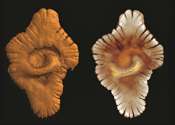AI algorithm unblurs the cosmos
The cosmos would look a lot better if Earth's atmosphere wasn't photo bombing it all the time.

The cosmos would look a lot better if Earth's atmosphere wasn't photo bombing it all the time.
Astronomy
Mar 30, 2023
0
379

Alaskans and visitors may be able to see an artificial airglow in the sky created by the High-frequency Active Auroral Research Program during a four-day research campaign that starts Saturday.
Planetary Sciences
Nov 3, 2023
0
355

Jupiter has some of the most conspicuous atmospheric features in our solar system. The planet's Great Red Spot, large enough to envelop Earth, is nearly as well known as some of the various rivers and mountains on the planet ...
Astronomy
Oct 19, 2023
5
212

Oak trees accumulate more wood when there is more carbon dioxide (CO₂) in the atmosphere. That's the key finding from our new study, carried out in a long-established forest in Staffordshire, England, that we have turned ...
Environment
Aug 14, 2024
0
87

Using the European Southern Observatory's Very Large Telescope (ESO's VLT), astronomers have discovered the heaviest element ever found in an exoplanet atmosphere—barium. They were surprised to discover barium at high altitudes ...
Astronomy
Oct 13, 2022
4
591

The James Webb Space Telescope (JWST) has just scored another first: a detailed molecular and chemical portrait of a distant world's skies.
Astronomy
Nov 22, 2022
1
3076

A research team using the ChemCam instrument onboard NASA's Curiosity rover discovered higher-than-usual amounts of manganese in lakebed rocks within Gale Crater on Mars, which indicates that the sediments were formed in ...
Astrobiology
May 1, 2024
0
4682

Environmental evidence of the very first experiments in the evolution of complex life on Earth, has been uncovered by an international team of scientists.
Paleontology & Fossils
Jul 29, 2024
2
869

Researchers using NASA's James Webb Space Telescope have detected evidence for quartz nanocrystals in the high-altitude clouds of WASP-17 b, a hot Jupiter exoplanet 1,300 light-years from Earth.
Astronomy
Oct 16, 2023
0
206

Researchers have confirmed the presence of an exoplanet, a planet that orbits another star, using the NASA/ESA/CSA James Webb Space Telescope for the first time. Formally classified as LHS 475 b, the planet is almost exactly ...
Astronomy
Jan 11, 2023
0
1808